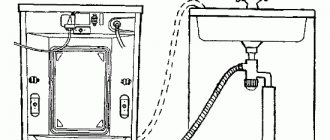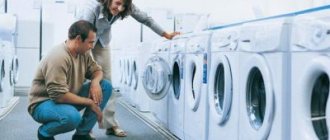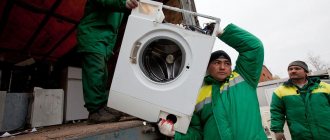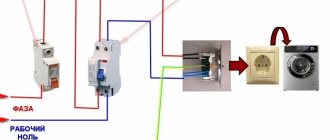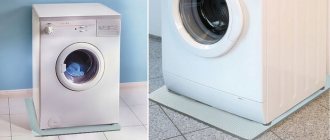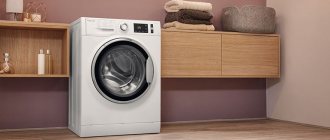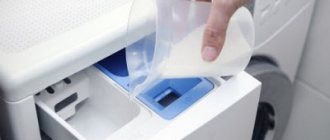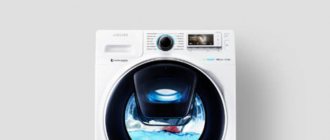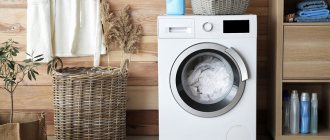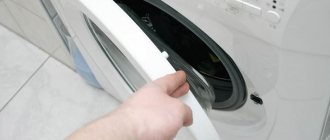Electricians recommend starting interior planning by thinking through the layout of outlets in the house. If this is not done, then in order to connect lamps, laptops, TVs and any household appliances, you will have to purchase extension cords. Despite its apparent convenience, this method of connecting devices to the electrical network has many disadvantages, and these are not just the wires scattered around the apartment. This can be hazardous to health, as is the case with a washing machine.
Why is it needed?
An interference reduction device is a type of electrical device designed to protect complex equipment and household appliances from voltage surges and eliminate radio interference.
In a standard 220V power supply network, interruptions often occur. Excess voltage is not predicted and depends on natural factors, the operation of building communications, etc. Whether a surge protector is needed is determined by the type of household appliance. For complex technical devices, including refrigerators, the device is required for safe operation.
The design of the product includes the following elements:
- network wire;
- buttons;
- socket group;
- sensors;
- toggle switch;
- varistor;
- USB connectors, etc.
The interference filter contains phase and neutral wires that are connected to the coil. 1-2 capacitors are installed between the wires. The element allows you to minimize impulse noise that negatively affects the operation of the device, and the signal becomes smooth.
The toggle switch is used for efficient operation, because no need to remove the plug. The switch reduces wear on the socket plates and extends the service life of the filter.
A varistor is a semiconductor element that reduces the load by short-circuiting circuits. The element allows you to prevent deformation of the device due to voltage surges. A varistor with standard characteristics has a power of up to 470 W.
The socket group includes several sockets for connecting different devices
It is important to determine the total power of household appliances, because... Excessive loads can lead to overheating of devices
View » Electrical diagrams of single-compressor and two-compressor two-chamber Atlant refrigerators
The cord to the product must be provided with an external insulating layer and internal protection for safety.
Why does the pilot keep crashing?
“Pilot” is a voltage filter, not intended for powering energy-intensive devices. A kettle and microwave oven consume about two kilowatts (minimum if you take it). When switched on, large currents arise in the circuit and, if + in addition there is increased voltage in the network, the protection is sure to trip.
Interesting materials:
How can I make the phone ask which SIM card to call from? How can I make the phone ask which SIM card to call from? How can I make my phone visible like a flash drive? How to make telegrams not take up a lot of space? How can I have only one page in landscape orientation? How to make flowers stand in water for a long time? How to prevent flowers from wilting during vacation? How to make Yucca have a thick trunk? How to get bitten by a vampire in Sims 4? How to make Instagram notifications come without text?
Is it possible to turn on a washing machine through an extension cord - Construction, repair, arrangement
Scientists note that compared to the last century, the activity of society has increased significantly, and therefore almost all of us have begun to feel a total lack of time to solve everyday issues.
In order to reduce the burden on a person and provide him with a comfortable everyday life, special devices were created that, in a relatively short period of time, have already been able to win the hearts of many consumers and continue to be in demand to this day.
As a rule, household equipment that we use constantly, for example, air conditioners, boilers, multicookers and microwaves, run on electricity. The washing machine occupies a leading position among acquisitions due to the presence of certain advantages:
- minimizing human labor;
- a large selection of actions to be performed, the presence of many programs;
- beautiful external component.
However, in order to use the equipment, you need to know how to connect the washing machine to the water supply and sewer systems, and position the product so that during operation it does not wobble or “jump” around the room.
Whether you turn to specialists for help or carry out the installation of the device yourself is up to you. However, we note that independently carried out manipulations for installing a washing machine will be a good help for further study of the installation features of other types of household appliances.
Deciding on the location
Let's say you have already selected a suitable model of washing machine in the store that suits you in terms of quality, cost and set of built-in programs. It's time to think about where to install the unit, because changing the location of the product will no longer be possible.
Traditionally, washing machines are installed in bathrooms; this is the most convenient option, because the necessary pipes for connection pass through here, and the drain is also located. However, if the bathroom is limited in space, the device is by default moved to the kitchen or hallway. A small cabinet designed to match the overall design of the room will help hide equipment from prying eyes.
Various questions regarding washing machines
What do energy saving labels mean for washing machines?
A washing machine equipped with a green energy saving label seems to be aimed at the environmentally responsible consumer. Such labels are designed to encourage us to buy more energy-efficient washing machines, and in turn encourage manufacturers to produce more energy-efficient washing machines. However, not everything is so simple, and such stickers can easily mislead you about the real state of affairs in saving electricity. You can find out on the Internet what exactly this or that “green” sticker actually means, and not what the manufacturer wants to say.
The problematic proximity of copper and aluminum
Most older residential buildings typically use aluminum wire as the main wiring. Its direct connection to a copper cable is not allowed, because when interacting, these metals enter into a chemical reaction, as a result of which the contact point is oxidized, forming a dielectric film on the surface of the conductor. Such a connection quickly begins to heat up and, regardless of the thickness of the cross-section of the wire for the washing machine, especially under high load, inevitably leads to burnout of the contact pair. This can lead to equipment failure and even a fire. To avoid such a situation, specialized connecting clamps must be used to interface copper and aluminum conductors.
It is also now possible to calculate what wire cross-section is needed for a washing machine when using an aluminum three-core cable for power supply. With a declared load of 2.2 kW, its cross-section must be at least 3 mm2 for each thread.
Extension cord for powerful consumers (washing machines, etc.)
Greetings to all forum members! Please share your opinion: what extension cord can be used to connect a washing machine, microwave oven and other powerful consumers to the network?
The question arose due to the fact that: 1) in the “operating instructions” the manufacturers do not recommend doing this; 2) in another thread, the respected Alex_Penza wrote: “Yes, turning on such powerful consumers as MV, kettles, washing machines, etc. is strongly not recommended, I would even say it is life-threatening (unless it is a homemade super-reliable extension cord, and not store-bought noodles for 0.75 sq.mm.)" 3) and for many years almost all of my similar equipment has been connected through extension cords!
Which device is suitable?
Time moves forward, and conventional RCDs are no longer able to protect equipment and people from all risks. Now electricians recommend choosing more reliable and safe devices - automatic machines. They represent improved machines, complemented by the functions of a fire switch.
Previously, the RCD and the circuit breaker were connected in series, providing comprehensive protection. Now the difavtomat combines two of these devices at once. The cost of the device is high, so its choice must be taken seriously. Professionals advise buying an electromechanical one with 0.03 A. There is also a fully electronic one with 0.01 A: it is more expensive and is installed mainly in technical rooms.
Interesting:
- Is it possible to connect a dishwasher via an extension cord?
- Location of outlets for washing machine and dryer in…
- Which extension cord should I choose for my washing machine?
- Extension cord for automatic washing machine
- How to choose a surge protector for a washing machine
- Connecting a water heater and washing machine
Reader comments
- Share your opinion - leave a comment
Bad extension cords
Unfortunately, most often there are cheap extension cords on sale, which hide a bunch of potential dangers.
In appearance, everything seems to look civilized, and the inscriptions are calming. Rated currents up to 16A, voltage 250-260V! and so on.
However, once they are revealed, all the shortcomings are revealed. The most painful place is the undersized wire cross-section. You won't see this under the “thick” insulation and molded plug.
But inside the case, at the points of connection to the plates, you can already compare it with something.
Next come the magnetizable contact plates. This picture says a lot:
Sometimes they are even made from tin cans, as evidenced by the pattern on the sides. Instead of brass, galvanized iron is used here. As a rule, in such models the fork itself is made of the same material.
Even with a load of less than 1 kW, the wire begins to heat up, and with prolonged load it can melt. All this is fraught with the risk of fire.
Therefore, be careful when purchasing and never trust only inscriptions and brand names. You can choose a high-quality extension cord for absolutely any purpose with a length from 1.5 m to 50 m here.
How to connect
The connection is carried out taking into account the following safety requirements:
- it is prohibited to connect 2-3 filters with each other;
- It is not recommended to use additional equipment (fans and other high-power devices) together with the filter;
- For high-power equipment, a specialized filter is used.
You can connect the device in the same way as installing an adapter. The product is plugged into an outlet, then household appliances are connected to the housing, and the button on the outer part of the structure is turned on. When using for more than 7 days, you need to take breaks and unplug the equipment.
If there is no grounding device, the filter efficiency will decrease by 20-35%.
How to choose an extension cord?
When choosing an extension cord, you need to consider two questions.
- What will we connect?
- Where will we connect?
The answer to the first question will help you choose an extension cord with optimal throughput, because if you buy an extension cord to charge your smartphone and then decide to connect a washing machine to it, nothing good will come of this idea.
The answer to the second question will help determine the length of the wire, because some users just need to conveniently place the new lamp in the room, while others have to pull an additional socket from the living room to the kitchen.
If you need an extension cord with a long cable, do not forget about coil devices, they will elegantly solve the problem of protruding wires.
Cable
A good, reliable extension cable should not be too thin. A thin cable, firstly, breaks easily, and secondly, the cross-section of such a wire is unlikely to be larger than 0.5 mm 2, which means it can no longer be connected to demanding devices and high-power devices.
Block
Plastic is a typical material for extension cords and this does not mean that this is a bad and low-quality device. It is important that the block is not fragile and has a grounding contact.
Bandwidth
Extension cords have a capacity of 6A, 10A, 16A or 32A. A 6A extension cord is suitable for a lamp, and for connecting a refrigerator or welding machine, the larger the better.
Article on the topic: How to properly wash a soft toy in a washing machine
Number of sockets
Depends on individual needs: two, three or four. The main thing to remember is that if you connect devices to all sockets, the total power of the connected devices may exceed the maximum load of a household extension cord and it will fail.
How the filter works
If a surge protector is built into a washing machine, it can allow oscillations with a frequency of 50 Hertz to pass through, and the remaining impulses will be immediately blocked.
This is a significant point, since if we consider network outages and surges, then significant surges in amplitude can cause damage to the machine’s systems, including complete loss of performance.
When using the protective device, it is forbidden to turn off the washing machine from the outlet during operation, as the filter may break.
It doesn't matter what kind of filter there is. Any is better than none.
Even simple inductors with a small capacitance are good, the only problem is that they will not be able to withstand a strong voltage surge.
Some users are convinced that it is not necessary to install a surge protector. Perhaps older models of washing machines will most likely be able to cope with the amount of current.
But, modern equipment without protection will easily suffer from another instability in the network and by starting the washing process, the user may lose the control panel, motor, heating element, etc.
Instability can also occur in the device itself. When an induction motor is started, a number of peaks are generated or current dips occur, which can result in high-frequency harmonics. But, thanks to the protective filter, this process is smoothed out, because the filter catches such differences and resets them to ground. In this way, it protects devices and appliances connected to an external power supply (microwaves, computers, TVs and others) from damage.
You should take into account the fact that if a malfunction occurs in the network filter, for example, an asynchronous motor burns out, then the operation of the entire washing machine completely stops for safety reasons
Surge filter for automatic washing machine. What is it for and how to check
The current washing machine is so modified and designed that many have already forgotten about the times when they washed several batches of laundry in the same water.
A modern washing machine is good in everything, and thanks to it, washing turns into a holiday, unless surprises occur in terms of malfunctions and breakdowns. The machine will not be able to work without electricity, but there is a certain danger in this.
Unfortunately, power surges often occur in the network and can damage equipment. Such power fluctuations can lead to repairs to the washing machine.
- Purpose of a surge protector
- Built-in surge protector
- External surge protector
- How the filter works
- Filter faults
Article on the topic: Which compartment to put powder in the lg washing machine
The whole truth about the residual current device
An RCD is a system for emergency blocking of electricity in a circuit built into the carrying case. When an overload occurs for various reasons, the opening and de-energizing mechanism is triggered. The device is ideal for use as a construction tool, but according to the rules it is contraindicated for a washing machine. She is a big energy consumer!
Ideally, the machine should be supplied with a high-quality cable of suitable cross-section! The power peak occurs during the spin cycle; it is at this moment that incorrect wiring causes heating and overload.
In the event of any failure in the network, the RCD will operate and prevent the equipment from permanently breaking down. But there are several reasons why you shouldn’t take the risk:
- Sometimes a current breaks through the body of the equipment. If you touch it at this moment, the RCD will work with a delay, and the person will already need emergency medical care.
- Overloading will ignite weak wiring and sockets. Protection prevents fire only half of the time...
- A sudden change in the electrical circuit can completely burn out the filter and even the control board in a split second. The RCD may not have time to react!
Yes, no one denies the usefulness of automatic protection. It should not be ignored, it is she who saves expensive devices from power surges, but constantly relying on it and connecting powerful units is dangerous.
Once again, we come to the conclusion that it is not worth the risk of relying on portable sockets. It is no coincidence that the manufacturers wrote in the instructions about the ban! You can't ignore the rules. Just call an experienced technician, buy a good cable and a high-quality socket with water protection, and then wash your clothes in complete safety.
Why additionally protect the outlet?
Every electrically powered device is called a consumer, and a washing machine is no exception. On the contrary, unlike a telephone charger or a computer, which consume little electricity, a washing machine requires a lot and puts a fair amount of strain on the electrical network. It is also important that the unit operates in a humid environment, and therefore belongs to a high-risk group. This fact cannot be ignored - it is much safer and smarter to recognize the “weight” of the unit and protect it with an RCD.
Ideally, when purchasing equipment, you should pay attention to its power. The amount of energy consumed is always specified in the instructions, and the more functionality the unit provides, the higher the load on the network and the risks. Thus, a washer-dryer on the “wash-rinse-spin-dry” program takes on 1.5 times more voltage than a regular one. In this case, you should take care of not even one, but several machines.
An RCD or residual current device is capable of detecting a network overload and urgently cutting off the current supply to the device, preventing a leak or fire. If someone touches a damaged conductor or moisture gets into the outlet, the switch will “trip” and the power will go out.
Such a “chain reaction” is possible due to its special design. The machine consists of the following parts:
- transformer;
- a relay that breaks the start circuit;
- a device capable of testing the network automatically;
- electromagnetic cut-off (available in modern devices).
Unlike old “plugs”, fuses, RCDs are used repeatedly and do not change after each accident. The main thing is to fix the problem after a failure and return the machine to the “working” position.
Expert advice on installing devices
Connecting a car to the electrical network can be completely simple - plugging a plug into a socket, or complex - even installing a ground loop outside the house. To make fewer mistakes, it is useful to familiarize yourself with the recommendations of experienced professionals. Here are some tips from electricians:
- never ground the car to heating radiators or water and gas supply pipes;
- in a private house, the best place to install a washing machine is the basement: noise, odors, and dampness do not reach the residents;
- The smart way to connect to the power grid is to run a three-core cable from the panel on which to install the difavtomat;
- Do not place the socket for the machine below 30 cm from the floor level, closer than 0.6 m from plumbing, near heating pipes, water supply, or on a cold wall - condensation may form on the terminals.
Experts advise placing the socket slightly above the machine and on the side so that it is convenient to turn on the plug. The main warning is to follow the rules for handling electricity, all work with which is classified as dangerous.
Installing an outlet
After the wiring is laid along its entire length, you can install the socket. The sequence of actions is as follows.
- Installation of a socket box. To fix it, use the complete fasteners, but it wouldn’t hurt to additionally “seat” it with cold welding or sealant.
- The ends of the wire are inserted into the hole in the socket box.
- Unpack the socket and take out its inner part.
- The terminals are connected alternately: phase, neutral, ground. At the same time, you need to ensure that the ends of the wire are not too tight; do not forget that it is quite possible that the socket will have to be repaired.
- Using standard fasteners, the socket is securely fixed in the socket box. No play is allowed; it must “sit” motionless.
- Screw on the plastic cover.
After this, the wire is connected to the machine; of course, at the time of connection, the electricity in the apartment must be turned off.
Purpose of a surge protector
A surge protector for a washing machine will do the job perfectly. It will protect against surges and voltage drops in the network, muffling impulse and high-frequency interference.
A surge protector is not just an extension cord with a certain number of sockets and a fuse.
The filter can be built into the equipment at the production stage or purchased as an additional protection part and connected to the device via a power source.
Built-in surge protector
Modern washing equipment is a rather complex device, but nevertheless sensitive, for example, to current changes in the network.
Therefore, it requires reliable protection and stability in the first place, because otherwise a washing machine without a surge protector, receiving high or low impulses, may burn out.
Especially if it is an automatic machine with touch controls
We take into account the fact that such models are sensitive; the manufacturer himself supplies the machine with a surge protector during the production process. It is located where the electrical cord begins
If it breaks, the internal filter cannot be repaired but must be replaced. The part is replaced with an original spare part, which is not always easy to do.
Internal filters vary in degree of protection depending on the manufacturer and model of the connected equipment. The level of protection is related to:
- maximum load and maximum current;
- passable voltage threshold;
- rated current;
- response time after a power surge to shutdown.
External surge protector
Such a device can protect equipment from short circuits and current surges, thanks to a fuse, cutting off the flow of electricity.
Manufacturers offer extension cords with different numbers of outlets and types of protection:
- base;
- professional;
- advanced.
Some models are improved with additional devices in the form of an on or off button on each outlet or have child protection.
A large number of sockets on an extension filter is important when there are several devices standing nearby. This filter is quite powerful, but also more expensive.
The difference may be in the length of the extension cord
You need to pay attention to this when purchasing and calculate the required length in advance.
Maximum load is an important indicator.
If we take professional protection, then the rate of energy surges absorbed by the filter is 2500 J, while for a simple one this figure is 960 J.
The filter may contain several fuses at once, but one of them must be fusible, and the rest are divided into high-speed and thermal.
Z
Some manufacturers provide the safety mechanism with an LED indicator, which allows you to visually assess the performance of the device.
What cannot be done when using protection with an external surge protector?
- The device operating through the filter should not have a power exceeding 3.5 kW.
- You cannot connect an extension cord to a 380 V network.
- Connecting such devices at the same time is dangerous.
- A prerequisite when using a filter is to ground the outlet.
Is it necessary to install grounding?
It’s not enough to buy a washing machine, you also need to connect it correctly. When all pipes are connected, electrical work begins. Installation rules:
- Do not use the washing machine without grounding.
- Do not use extension cords. It is also not recommended to use a special extension cord with an RCD.
- In rooms with a high moisture content, sockets must be installed in a moisture-proof housing.
- Connect the washing machine through a protective device.
Among the important parameters of automatic protection is leakage current. The device reacts precisely to it. If the wiring is new, take the 10 mA option. For a circuit break to occur, the difference in current between phase and neutral must be 10 mA or more. If the wiring is old, use a 30 mA RCD to avoid erroneous shutdowns.
Another nuance that is important to pay attention to when choosing an automatic machine to connect to a washing machine is the manufacturer. There are two options:
- Expensive and high quality - Legrand or ABB.
- Budget - IEK.
These are the most famous companies on the market that produce protective automation. Chinese versions are cheaper, but they will not provide the reliability that European devices provide. If you select the wrong power and electric current, the plugs will be knocked out every time you start the machine.
In modern washing machines, the housing has a potential that is half the network potential - 110 V. Thanks to the grounding wire, this potential flows to the ground. Why is this done? The point is in the features of network filters that suppress electrical interference produced by the washing machine during operation. The device body is connected to the electrical network not directly, but through filters.
Grounding helps protect a person from electric shock if insulation damage occurs. If there is no grounding, a person touching the case feels a tingling sensation, and sometimes even more serious shocks. In a damp room, a washing machine without grounding can cause serious electrical injury, even death.
By installing a difavtomat on a washing machine, you solve two problems at once - you eliminate equipment breakdowns due to problems in the electrical network and protect its users from electric shock.
This device is designed to protect people and electrical equipment from accidental electric shock or leakage of electric current.
We invite you to familiarize yourself with Small bugs in cereals
It is also possible to install a differential automatic machine (difavtomat) instead of an RCD. The general principle of operation of the difavtomat is similar to a residual current device, but has several additional functions: protection not only against current leakage, but also against short circuits and overloads in the electrical network. An automatic switch is also installed in its design.
Externally, it looks like a small plastic box with a toggle switch and several holes for connecting electrical wires. But the apparent simplicity of the design has no analogues.
The operating principle of the RCD is quite simple. The device constantly “compares” the current going to electrical appliances with the current coming from them, and if a difference occurs, it automatically turns off the power grid. But there are still drawbacks to this design. If, during an electric shock to a person, the current does not leave the closed circuit (is not grounded), the RCD does not trip because it “does not see” the voltage leak.
Connecting the machine to the electrical network
A washing machine is an equipment that consumes a lot of electricity during operation. Depending on the model of the washing machine, power consumption can range from 1.0 to 4.0 kW. Therefore, before buying a car, you should find out how much power the existing wiring in the apartment can withstand.
In our old houses, as a rule, wire of the same section was used for electrical wiring. To determine the load capacity of a wire, you can open any socket and measure the diameter of its core, and determine by color what metal it is made of: aluminum (silver color) or copper (gold color). Having found out the technical characteristics of the electrical wiring in your apartment, you can use special tables to determine what power electrical equipment can be connected to it.
Load capacity of electrical wiring:
| Wire diameter, mm | 1,6 | 1,8 | 2,0 | 2,3 | 2,5 | 2,7 | 3,2 | 3,6 | 4,5 |
| Allowable load power, W | |||||||||
| aluminum wire | 3000 | 3500 | 4000 | 4600 | 5300 | 5700 | 6800 | 8400 | 12000 |
| copper wire | 4400 | 5500 | 6600 | 8800 | 11000 | 13200 | 17600 | 22000 | 35200 |
If the wiring is able to withstand the load from the selected washing machine, then you also need to check the quality of the twists of the wires in the junction boxes that power the electrical outlet that you are going to use to connect the machine, as well as the outlet itself. Most likely, it will have to be replaced, since the old Soviet sockets are not suitable for connecting Euro plugs, which are usually equipped with imported washing machines.
In most older houses, the electrical wiring is made of aluminum wires that can withstand a load of no more than 2.0 kW. In addition, old plastic outlets are rated at 6 Amps, while washing machines require, on average, about 10 Amps. Therefore, if you live in such a house, you will need to install a new three-wire outlet rated at a minimum of 16 Amps and place it as close as possible to where the machine will be installed. It is best to use a socket made of ceramic rather than plastic.
From all of the above, we can conclude that an automatic washing machine requires a separate electrical outlet and a protected electrical line, since it cannot be:
- connect to a weak outlet with unreliable electrical wiring;
- connect to the outlet together with another electrical appliance that consumes a lot of electricity;
- connect to an outlet using an extension cord.
Uzo connection
It is better to entrust connecting the washing machine to a specialist electrician, however, if you have basic knowledge in the electrical installation industry, you can complete this task yourself without much difficulty. The washing machine must be connected to the electrical network via an RCD in compliance with safety rules, comply with all requirements and take into account the technical characteristics of both the washing machine and the electrical wiring.
- Power, cross-section and wiring markings. The most common power of washing machines is from 2 to 2.5 kW. The meaning of this characteristic is written in the documents for the washing machine or on the back wall of the machine itself. Based on its power, you can choose the wiring of the correct cross-section. If the socket for the washing machine is powered by a two-core, especially aluminum, wire, it is necessary to replace the electrical wiring with a three-core copper cable. In this case, it is better to take a wire with a cross section of 2.5 square meters. mm, because this outlet will also plug in other electrical appliances, for example, an electric razor or a hair dryer.
- Grounding of electrical appliances. Since washing machines are most often installed in the bathroom, they are equipped with a maximum protection system against electric shock - protection class 1. This means that the device is equipped with a grounding system that is built into the power plug.
- Socket. Taking into account the presence of a grounding system in the plug of electrical appliances, it is better to choose a socket with an appropriate contact, the so-called “Euro” socket. If the outlet will be installed directly in the bathroom, it is better to give preference to a model with an increased degree of protection. Such models are designed for use in rooms with high humidity.
What does connection actually look like in modern realities?
Considering the complexity of work in the bathroom, our people have come up with several ways to circumvent the ban.
- Buy a personal extension cord for only one device. In fact, another socket is also a kind of carrier, but laid in the wall according to all the rules of science.
- Carrying must be of high quality and grounded! Some people make their own, while others buy them in a store. For example, it has proven itself well. Its carriers are equipped with protection; in the event of a power outage or overheating, the device will turn off and prevent expensive equipment from burning out.
- Extend the cord to the required length. But here pitfalls emerge in the form of constant exposure of the door to the wire. It will gradually wear out and there will be a risk of short circuit, electric shock or fire.
The best way is to conduct grounded wiring from the panel directly to the bathroom and not worry!
External filters: description of some features
The convenience for buyers is that they can choose an option whose characteristics are ideal for a given situation. External filters have the same characteristics as other models.
Troubleshooting Tips
Most modern models are designed in such a way that the filters simply turn off if any problems occur. Starting becomes impossible until the broken part is replaced.
Therefore, one of the first signs of a problem is that the washing machine basically refused to work. But the reason for this may lie in the appearance of other problems, defects in plugs and power cords among which are the most harmless.
When the parts are in good condition, they move on to the filter at the next stage.
The following problems indicate a malfunction of the network filters:
- Electric shock from the machine.
- The smell of insulation that has burned.
- Changing modes without permission from users.
Current in strength, voltage and resistance is measured using a special device called a multimeter. If you have one in your home, you can use this device when troubleshooting.
- The first stage is pairwise dialing of all contacts. 680 kOhm is the recommended resistance level. How to ring a design is easy to understand.
- Next, the resistance on the plug deserves a separate measurement. Here the standard level is 680 kOhm. Although the figure may differ slightly.
- The condition of capacitors is the most difficult to check. They have a dense compound filling. One can only make an attempt to measure the capacitance between different inputs. 0.47 µF is the optimal level.
The device is definitely damaged if the capacity approaches zero or the value drops out to infinity.
Why can't you connect your washing machine through an extension cord?
Faced with the problem of connecting a washing machine in a new apartment, I learned interesting information about carriers, wiring features and RCD (residual current device). Many of us don’t think about it, but the instructions for washing units state: “cannot be plugged into extension cords.” Why is that?
Safety precautions
In modern new buildings, developers are starting to make normal moisture-resistant sockets in the bathroom, facilitating further work on installing washing machines. But in most houses, the sockets are located somewhere in the corridor or room, and the cord of the machine is short, on average a meter and a half, no more. What to do? Resourceful people simply go to any hardware or electrical store and buy the first extension cord they like. It turns out that doing this is strictly prohibited! That's why:
- Often the carriers lie on the threshold, next to a working appliance or in the corridor. Such a neglectful attitude leads to unpleasant consequences: you can touch them with wet hands or bare feet and end up getting an electric shock.
- The cord under the door begins to fray and bend, losing its elastic and protective properties. Consequence? That's right, electric shock.
- Out of habit, we plug other devices into the extension cord, overloading the network. The carrier starts to heat up, and an automatic shutdown may work, which is also not good for the equipment! An emergency shutdown can cause the program to crash, and we will need a wizard.
- The constant use of different plugs, which do not always match the diameter of the pins, leads to wear and tear, and a washing machine is a powerful piece of equipment; it needs ideal operating conditions and constant current.
Our heart works from electrical impulses, which is why it is so afraid of electric shock. Even slight tension causes a malfunction of the heart muscles! Sometimes it’s better to be safe than to put your life and health at risk!
Technical requirements for direct current, grounding and power lead us to the fact that we still need a separate channel with special protection from moisture.
What does connection actually look like in modern realities?
Considering the complexity of work in the bathroom, our people have come up with several ways to circumvent the ban.
- Buy a personal extension cord for only one device. In fact, another socket is also a kind of carrier, but laid in the wall according to all the rules of science.
- Carrying must be of high quality and grounded! Some people make their own, while others buy them in a store. For example, it has proven itself well. Its carriers are equipped with protection; in the event of a power outage or overheating, the device will turn off and prevent expensive equipment from burning out.
- Extend the cord to the required length. But here pitfalls emerge in the form of constant exposure of the door to the wire. It will gradually wear out and there will be a risk of short circuit, electric shock or fire.
The best way is to conduct grounded wiring from the panel directly to the bathroom and not worry!
Why is an extension cord prohibited?
In modern apartments there are practically no problems with connecting washing machines to the electrical network. Developers carefully consider the layout of bathrooms, providing several waterproof outlets for convenient and safe installation of household appliances. But in “old” houses, communications are not so well established: access to power is standard or even located far away, in the corridor or room. If there is no way to rebuild the room, there is only one option left - throw in an extension cord.
The scheme is simple: go to the nearest hardware store, buy the first extension cord you come across and turn on the washing machine through it. There is only one problem - doing this is strictly prohibited. This item is specified in each factory manual.
Manufacturers strongly do not recommend connecting the washing machine through an extension cord - this is dangerous to human life and health!
Connecting through an extension cord is considered dangerous for several reasons:
You can't joke with electricity. The human heart “works” from electrical impulses, and even a small surge in voltage from the outside will lead to failures of the cardiovascular system . We must not forget about the fire hazard - damaged insulation and exposed wires can lead to a fire in equipment with further consequences.
Manufacturers of washing machines warn users and provide instructions for connecting the equipment to the electrical network. These include the supply of direct current of a certain power with grounding and protection from moisture. In most cases, the extension cord does not have such characteristics.
In case of emergency
The washing machine needs a separate outlet, but while specialists are installing it, you can use an extension cord as a temporary option. But the connection via an adapter must be organized according to all the rules. You can’t buy the first one you come across or take an old home one - you need a high-quality carrier with a sufficient cross-section
It is important to ensure that it has several important characteristics
Wire section. The machine puts a decent load on the network, which a conductor with a core diameter of at least 2.5 can withstand. Separate use. The washing machine requires a personal extension cord. Sufficient length. Immediately calculate the distance to the outlet and purchase a proportional adapter. It is not permissible to use multiple extension cords. Quality. The Pilot brand has proven itself to be excellent, offering high-quality electrical products that meet all standards. Security
It is important that the carriers are protected from moisture and overvoltage. The presence of grounding will prevent the equipment from burning out due to power surges and current leakage.
It is worth understanding that connecting through an extension cord, even a high-quality and protected one, is a big risk. It is better not to delay or experiment, but to establish a full-fledged connection to the power grid with a separate RCD.
Should an extension cord have an RCD?
Many modern extension cords have a built-in de-energizing system. This function is called an RCD, that is, a residual current device. The mechanism is triggered when overloaded. Contrary to the misconceptions of ordinary people, an extension cord for a washing machine should not have an RCD.
Since the machine is not connected as it should, the protection system in the carrier will not work correctly. Problems and malfunctions can occur during spinning and when heating water, since it is during these processes that the machine produces a peak of power. Most likely, the RCD will not work, or will react with great delay. If household appliances are used incorrectly, and through an adapter with a long cable and built-in power outage protection, accidents may occur. If there is an overload, the wiring and socket will light up first, so protection here is also useless. And besides, if a voltage drop burns out the filter and control board, the machine itself will turn off.
Remember that the safest way to connect a washing machine is through a grounded outlet with good quality wiring. In other cases, be extremely careful.
Source
Drain hose extensions for washing machines in St. Petersburg
This extension cord parameter is different for different manufacturers and can vary from 1.5 m to 50. Number of sockets. Again, the number of sockets can be from 1 to 6, depending on the model. The more outlets, the more devices can be connected to a particular extension cord at the same time. Availability of grounding. The grounding contact helps prevent electric shock if the equipment connected to the extension cord is faulty.
Extension cord or surge protector?
Features of choosing an extension cord for the home
Before choosing/purchasing a new extension cord, you need to clearly understand the answers to a number of questions.
Many of us are faced with the problem at home and at work when the standard length of the cord of any electrical appliance is not enough to plug it into an outlet, be it a professional hammer drill, an internal vibrator at a construction site, or a washing machine at home. In this case, you will need an electrical extension cord. Which one should you buy?
There are several main characteristics that you should pay attention to when purchasing:
-degree of protection (IP)
- type of cable (wire) - maximum load that the extension cord can withstand (measured in watts) - length of the cord - presence of a grounding contact - number of sockets
Degree of protection
In the segment of extension cords under consideration there are two degrees of protection IP20 and IP44
IP20 - these are open sockets and extension cords on them are intended exclusively for use indoors in dust-free rooms
IP44 dust-splash-proof extension cords (there are covers on all sockets), which allows you to work in dusty rooms and in open spaces in the rain.
Cable type: in fact, 220V extension cords can use KG (flexible cable, rubber sheath) and PVS()
For professional work, it is necessary to purchase an extension cord exclusively for the KG, because it has an operating temperature of -40 +40 (HL option up to -60, T option +50), is resistant to abrasion, and can be bent an unlimited number of times.
At the same time, the PVA wire, being about 30% cheaper, has an operating temperature of +1 and at a lower temperature “tans” and inevitably cracks at the bend, is not resistant to abrasion (if you “drag” the wire several times along a concrete slab, you can seriously damage it) , and often collapses in places where there are frequent bends.
Thus, for professional work we strongly recommend exclusively the KG cable; PVA can only be considered if you plan to use it exclusively in a heated room, and in a rather gentle mode..
Maximum load. This indicator determines how powerful the device you can connect. It depends on the cable cross-section. For 220V extension cords, sections of 0.5-2.5 mm2 are considered. Each extension cord has a maximum permissible load rating, which is usually indicated on the device body.
What to look for when choosing an extension cord
There are not always enough sockets to connect electrical appliances or they are located in a remote location. Then you have to use an extension cord or a carrier, as they are often called.
You can’t do without it at a construction site, especially when you have to work with power tools at height or somewhere in the yard.
This is an indispensable product in everyday life and work, so let’s figure out how to choose an extension cord and which one is best for connecting household appliances, power tools and other types of equipment!
Cross-section, length and type of cable
The main thing to check when choosing is how much power or current the electrical extension cord can withstand. This information should be indicated on the packaging or determined by the product itself; now we will tell you in more detail.
Sometimes people mistakenly believe that if an amperage of 16A is written on a socket or plug, then the entire extension cord will withstand this current - this is not a fact! To select the appropriate amperage, some electricians use rules like:
10 A per 1 sq. mm cross-section of conductor
And this works in most cases, albeit with minor deviations. That is, an electrical extension cord with a core cross-sectional area:
- 0.75 sq. mm – suitable for 6 A;
- 1 sq. mm – 10 A;
- 1.5 sq. mm – 16 A;
Extension cords of long length (from 25 or 50 meters, including those made in the form of a coil) are made with wire with a TPG cross-section of 2.5 square meters. mm. Firstly, to reduce losses, and secondly, to make the product more durable.
But for everyday tasks, such as connecting a washing machine or for a heater, it is enough to choose an extension cord 5-7 meters long with a conductor cross-section of 1.5 square meters. mm.
Electrical wire of the PVA brand is excellent for the extension cord. It has thick insulation, a round cross-section, and the gap between the cores is filled with a dielectric, which improves performance properties and resistance to damage. It bends well, but this design is quite dense and an electrical extension cord with 2.5 square meter cores. mm it turns out to be quite heavy and voluminous.
This wire is perfect for assembling an extension cord with your own hands. Electricians often use a flat cord of the ShVVP brand. Its insulation is not very thick, compared to the previous example, but it is quite suitable for installation and permanent work, while at a construction site it will quickly become unusable.
And for work in difficult conditions, it is better to choose an electrical extension cord, which is made of KG cable.
The thicker the wire, the easier it will withstand mechanical loads. But its thickness does not guarantee equally thick veins. On cheap products, there are no markings on the wire at all - beware of them.
So, first of all, the choice of an extension cord is based on the power of the equipment that you will connect to it, and the distance from its installation to the nearest outlet.
Design of plugs and sockets, their number
Depending on the design of the plug and socket, you can choose an extension cord with or without grounding. At the same time, in the version with grounding contacts and deep sockets, it will be difficult or impossible to insert plugs of Soviet electrical appliances into them. To connect not too powerful household appliances (up to 1 kW), a version with shallow sockets will be universal.
Safe Operation
The purchased extension cord may not meet the conditions of use in some respects. But changing and improving the factory-made design is unacceptable. Compliance with the rules for using an electrical extension cord eliminates the dangers caused by a discrepancy between the specified characteristics.
It should always be remembered that
- there should not be too many sockets in the block
- You cannot connect other household appliances to the extension cord along with the machine;
- It is best to buy a device with lockable sockets to protect them;
- It is better to use an extension cord in a fully expanded state (By the way, the load on the device in the expanded and collapsed states is indicated on the markings on the case. In the latter case, the cable heats up more and loses power faster).
It is prohibited to use an extension cord when the parameters of the number of cable cores and the cross-section of the wires do not match, if they are smaller in size than required by the power of the washing machine.
When using the carrier, it is useful to periodically check by touch the degree of heating of the connecting nodes and wires. The room temperature of the extension cord elements indicates the absence of malfunctions.
Thus, not every electrical extension cord is suitable for a washing machine: the design must include a grounding wire, an RCD or a surge protector.
Please note that carriers require careful handling - it is not recommended to tie them in a knot, twist them, or cover them with any objects. Do not use extension cords if the socket, plug or cord is faulty; do not lay them under the carpet or across the threshold. The cable should be placed as far away from the floor as possible.
Tips for use
When connecting an extension cord to an automatic machine, you must adhere to several important rules
It is important that there are not many sockets in the unit, and most importantly, that in parallel with the washing machine you do not have to turn on other large household appliances. It is better to unroll the extension cord completely
This meets safety regulations, and this method reduces cable heating. If possible, you should take an extension cord with snap-on sockets.
Under no circumstances should you connect this device if the parameters for the number of cable cores and wire cross-sections do not match. The same applies to the situation when this device parameter is less than that corresponding to the power of the washing machine. During washing, it is recommended to check from time to time how hot the wire is at different points. Room temperature indicates that everything is fine with the extension cord
It is important to remember that when carrying the wire, it should not be tied in a knot or twisted in any way. In addition, do not place any objects on top of the wire.
The extension cord can only be connected in cases where both all its components and the socket are in working order. Wires should not be placed under the carpet or laid through the threshold.
To learn how to install an extension cord for a washing machine, see the following video.
